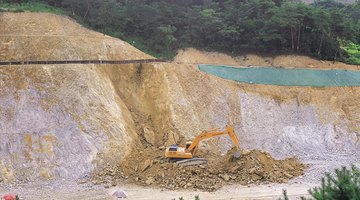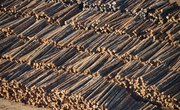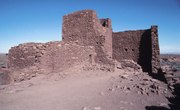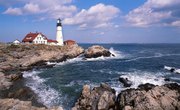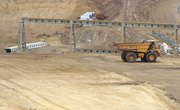In the United States, vast swaths of coastal plains line the Atlantic Ocean and Gulf of Mexico. The Atlantic Coastal Plain stretches from Massachusetts to Florida, where it connects with the Gulf Coastal Plain and extends westward through Texas and on into Mexico. As their name implies, the Coastal Plains possess a relatively flat, low-lying topography, making the area’s natural resources more readily extractible than in mountainous regions.
Rocks and Stones
Sedimentary rocks, limestone in particular, abound in the Coastal Plains. Although not typically exposed at the surface, in many places soil cover is fairly thin, making the rock easily accessible through quarries. Large blocks of limestone are used in building construction, and crushed stone is used to manufacture cement.
Sand and Clay
Sand, eroded from the Appalachian Mountains, is plentiful along the Coastal Plain’s rivers and coastlines. It is one of the ingredients in concrete, and is also used as road fill. Clay also eroded into the Coastal Plains from the Appalachians, and six of the country’s top ten clay-producing states lie in the Coastal Plains. Different types of clay are used for different purposes, such as in the manufacture of bricks, porcelain, cosmetics, detergents, rubber products and even kitty litter.
Mineral Deposits
Large deposits of phosphate are present in the Coastal Plains, with perhaps the most extensive deposits in North Carolina and Florida. Although primarily used in fertilizers, phosphates appear in a plethora of other products, among them pesticides, detergents and soft drinks. Thick salt deposits also lie under much of the Gulf Coastal Plains. Other minerals scattered throughout the Coastal Plains include bentonite, bauxite, monazite, and zircon.
Oil and Natural Gas
Sections of the Gulf Coastal Plains are rich in the highly profitable natural resources of petroleum and natural gas. According to the U.S. Energy Administration, the Gulf coast boasts more than 40 percent of U.S. petroleum refining capacity and 30 percent of natural gas processing ability. Texas in particular is a leader in production of crude oil.
Peat Deposits
Peat, a precursor to coal, can be found in the many swamps and marshes strewn throughout the Coastal Plains. In the U.S., peat is used for packaging produce, and also is a component of potting soil as well as a soil conditioner. Florida produces more peat than any other state in the country.
Related Articles
References
- Valdosta State University: South Georgia and Current Geological Research on the Gulf-Atlantic Coastal Plain, Donald M. Thieme
- The Paleontological Research Institution: Rock Resources of the Coastal Plain: Region 3
- The Paleontological Research Institution: Mineral Resources of the Coastal Plain: Region 3
- The Paleontological Research Institution: Mineral Resources of the Southeastern U.S.: The BIG Picture
- U.S. Energy Administration: Gulf of Mexico Fact Sheet
- U.S. Energy Administration: Texas Profile Overview
Resources
Writer Bio
Based in western New York, Amy Harris began writing for Demand Media and Great Lakes Brewing News in 2010. Harris holds a Bachelor of Science in Mathematics from Penn State University; she taught high school math for several years and has also worked in the field of instructional design.

